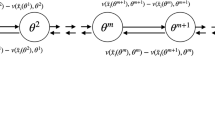Abstract
Economists have long believed that private provision of public goods will be inefficient, though recently some have argued that altruism may mitigate the inefficiencies. Without altruism, agents contribute to the point where marginal cost equals their private marginal benefits. With altruism, they contribute more and hence are closer to the point where marginal cost and total marginal benefits are equated. In an earlier paper (Bagnoli and Lipman, 1989), we showed that private provision need not be inefficient. In a very natural model of private provision without altruism, we showed that the set of (undominated perfect) equilibrium outcomes is identical to the core. Here we consider the effect of altruism on private provision. Altruism essentially creates more public goods because the well-being of others becomes a public good. We show that our model of private provision still has efficient equilibria under a wide variety of circumstances. Interestingly, the equilibria may be inefficient when agents are concerned about the effect of private provision on the distribution of wealth. Intuitively, the game we consider is a very powerful instrument for efficient private provision, but must be supported by other instruments if the set of public goods is expanded too far.
Similar content being viewed by others
References
Andreoni, J. (1989). Giving with impure altruism: Applications to charity and Ricardian equivalence. Journal of Political Economy 97 (December): 1447–1458.
Andreoni, J. (1988). Privately provided public goods in a large economy: The limits of altruism. Journal of Public Economics 35 (February): 57–73.
Bagnoli, M. and Lipman, B.L. (1989). Provision of public goods: Fully implementing the core through private contributions. Review of Economic Studies 56 (October): 583–601.
Bagnoli, M. and McKee, M. (1988). Voluntary provision of public goods can be efficient — Empirical evidence. Mimeo. University of Michigan. Forthcoming in Economic Inquiry.
Bergstrom, T., Blume, L. and Varian, H. (1986). On the private provision of public goods. Journal of Public Economics 29 (February): 25–50.
Ferejohn, J., Forsythe, R., Noll, R. and Palfrey, T. (1982). An experimental examination of auction mechanisms for discrete public goods. In V. Smith, Research in experimental economics, Vol. 2. Greenwich: JAI Press.
Isaac, R., Walker, J. and Thomas, S. (1984). Divergent evidence on free-riding: An experimental examination of possible explanations. Public Choice 43(2): 113–149.
Laffont, J.-J. (1975). Macroeconomic constraints, economic efficiency, and ethics: An introduction to Kantian economics. Economica 42 (November): 430–437.
Mas-Colell, A. (1980). Efficiency and decentralization in the pure theory of public goods. Quarterly Journal of Economics 94 (June): 625–641.
Maskin, E. (1977). Nash equilibrium and welfare optimality. Mimeo.
Olsen, M. (1965). The logic of collective action. Cambridge: Harvard University Press.
Palfrey, T. and Rosenthal, H. (1984). Participation and the provision of discrete public goods. Journal of Public Economics 24 (January): 171–193.
Palfrey, T. and Rosenthal, H. (1988). Private incentives in social dilemmas: The effects of incomplete information and altruism. Journal of Public Economics 35 (April): 309–332.
Palfrey, T. and Srivastava, S. (1986). Nash implementation using undominated strategies. Mimeo. Carnegie Mellon University.
Samuelson, P. (1954). The pure theory of public expenditures. Review of Economics and Statistics 36 (November): 387–389.
Schneider, F. and Pommerehne, W. (1981). Free riding and collective action: An experiment in public microeconomics. Quarterly Journal of Economics 96 (November): 689–704.
Shubik, M. (1982). Game theory in the social sciences. Cambridge: MIT Press.
Sugden, R. (1982). On the economics of philanthropy. Economic Journal 92 (June): 341–350.
Sugden, R. (1984). Reciprocity: The supply of public goods through voluntary contributions. Economic Journal 94 (December): 772–787.
van Damme, E. (1983). Refinements of the Nash equilibrium concept. Berlin: Springer-Verlag.
Warr, P. (1983). The private provision of a public good is independent of the distribution of income. Economic Letters 13 (October): 131–138.
Author information
Authors and Affiliations
Additional information
We wish to thank Jim Andreoni, Ted Bergstrom, and an anonymous referee for helpful comments and to acknowledge financial support from the National Science Foundation through NSF Grant SES-8520296. Of course, any remaining errors are our responsibility.
Rights and permissions
About this article
Cite this article
Bagnoli, M., Lipman, B.L. Private provision of public goods can be efficient. Public Choice 74, 59–78 (1992). https://doi.org/10.1007/BF00175211
Accepted:
Issue Date:
DOI: https://doi.org/10.1007/BF00175211



